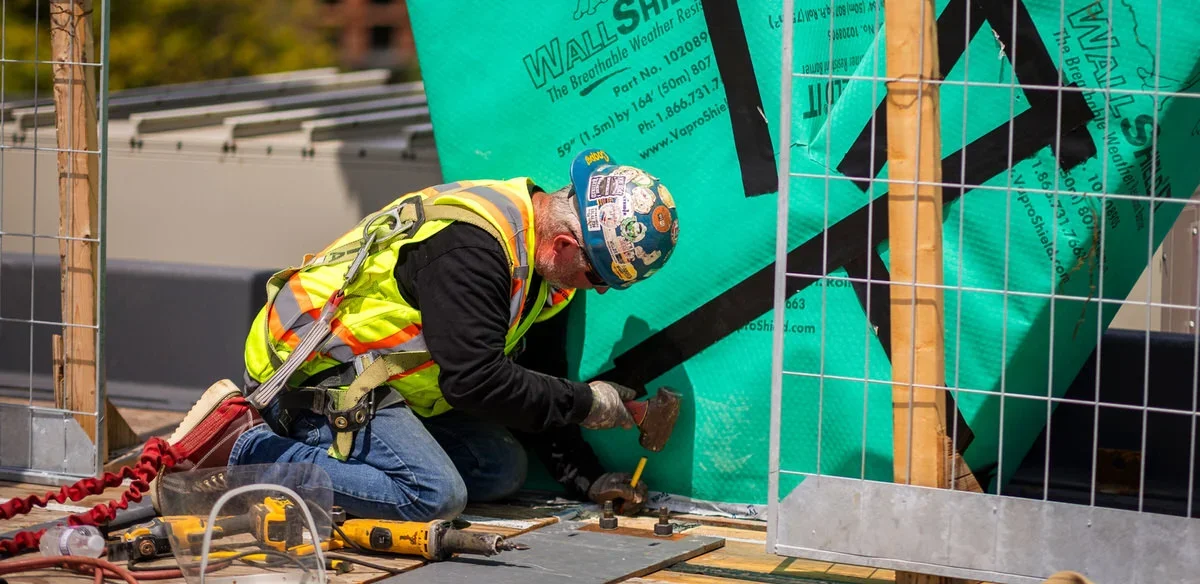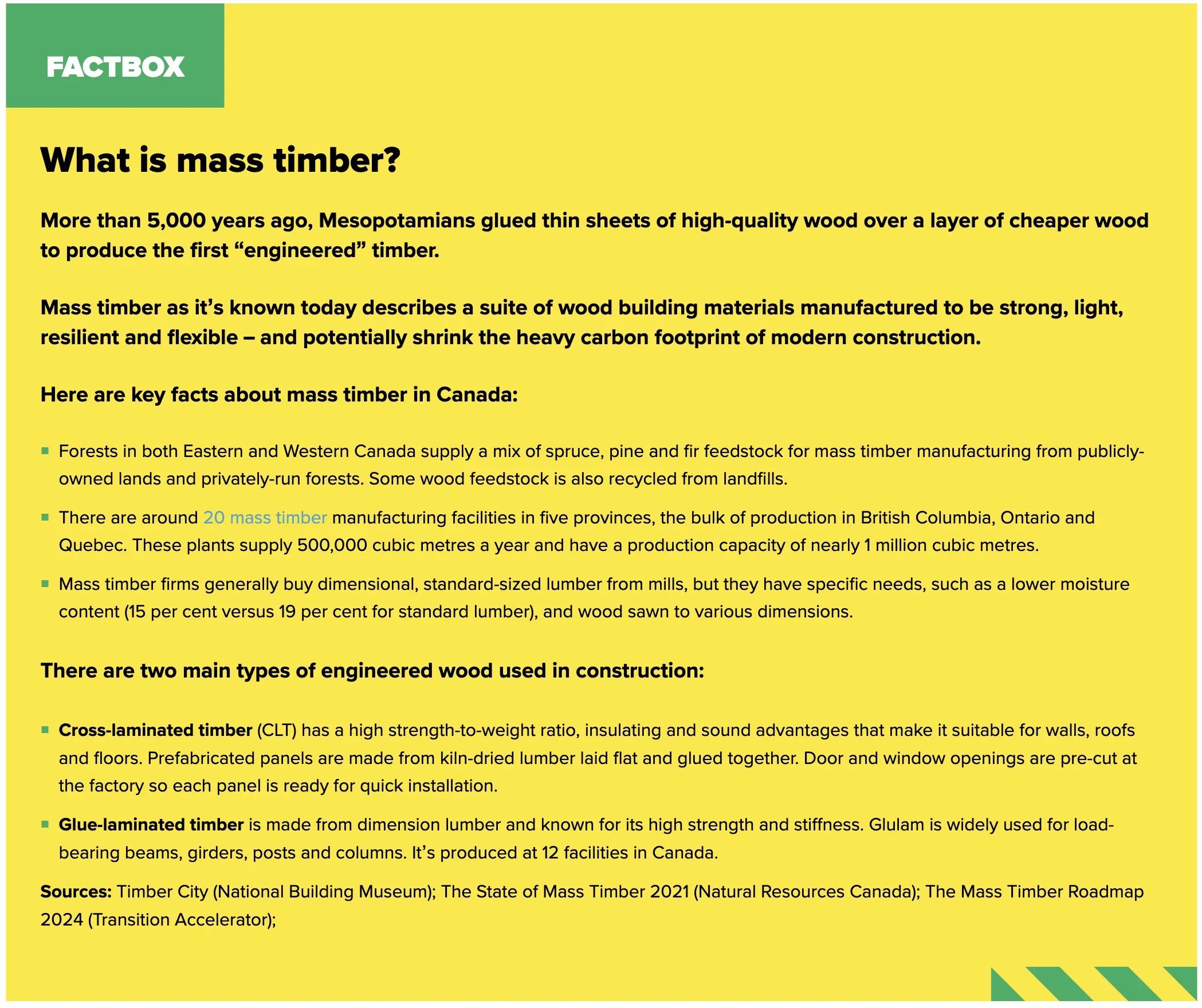Timber trail blazers see new growth in green building drive
By Darius Snieckus
Lumber was once a go-to building material before concrete and steel took over. Now, reborn as mass timber, it may be on the cusp of a comeback as the construction sector steps up its green transition.
Mass timber is touted as a landscape-changing, low-carbon material for everything from apartment blocks to office towers. Canada’s market share could triple to $1.2 billion by 2030 – if manufacturers and policymakers can overcome a range of challenges, writes Darius Snieckus.
Wood, one of the world’s oldest building materials, could make a comeback in the next decade if mass timber can overcome a range of challenges as the green transition gains momentum in Canada’s construction industry.
This will not be the lumber of days gone by, chopped and sawed and hammered into homes and buildings in the years before steel, cement and glass radically transformed architecture in the 20th century.
Mass timber – a generic term for materials engineered out of laminated lumber, veneer and wood strands – is attracting a great deal of attention as Canada seeks to build millions of new commercial, residential and institutional buildings without driving up the country’s carbon emissions.
Lighter than concrete or steel but strong enough for use in load-bearing beams and columns, mass timber has environmental and construction virtues that could dramatically change the building landscape, green construction advocates say.
image courtesy of National Observer website.
Big Green Build
Canada's Plastics Problem
Democracy and Integrity Project
Special Reports from COP 26
Toxins in Canada
Canada's Clean Economy And Green Stimulus
Sustainable Cities
Youth Climate Action
- November 2025
- October 2025
- September 2025
- August 2025
- July 2025
- June 2025
- May 2025
- April 2025
- March 2025
- February 2025
- January 2025
- December 2024
- November 2024
- October 2024
- August 2024
- July 2024
- June 2024
- May 2024
- April 2024
- March 2024
- February 2024
- January 2024
- December 2023
- November 2023
- October 2023
- September 2023
- April 2023
- February 2023
- January 2023
- December 2022
- November 2022
- September 2022
- August 2022
- April 2022



